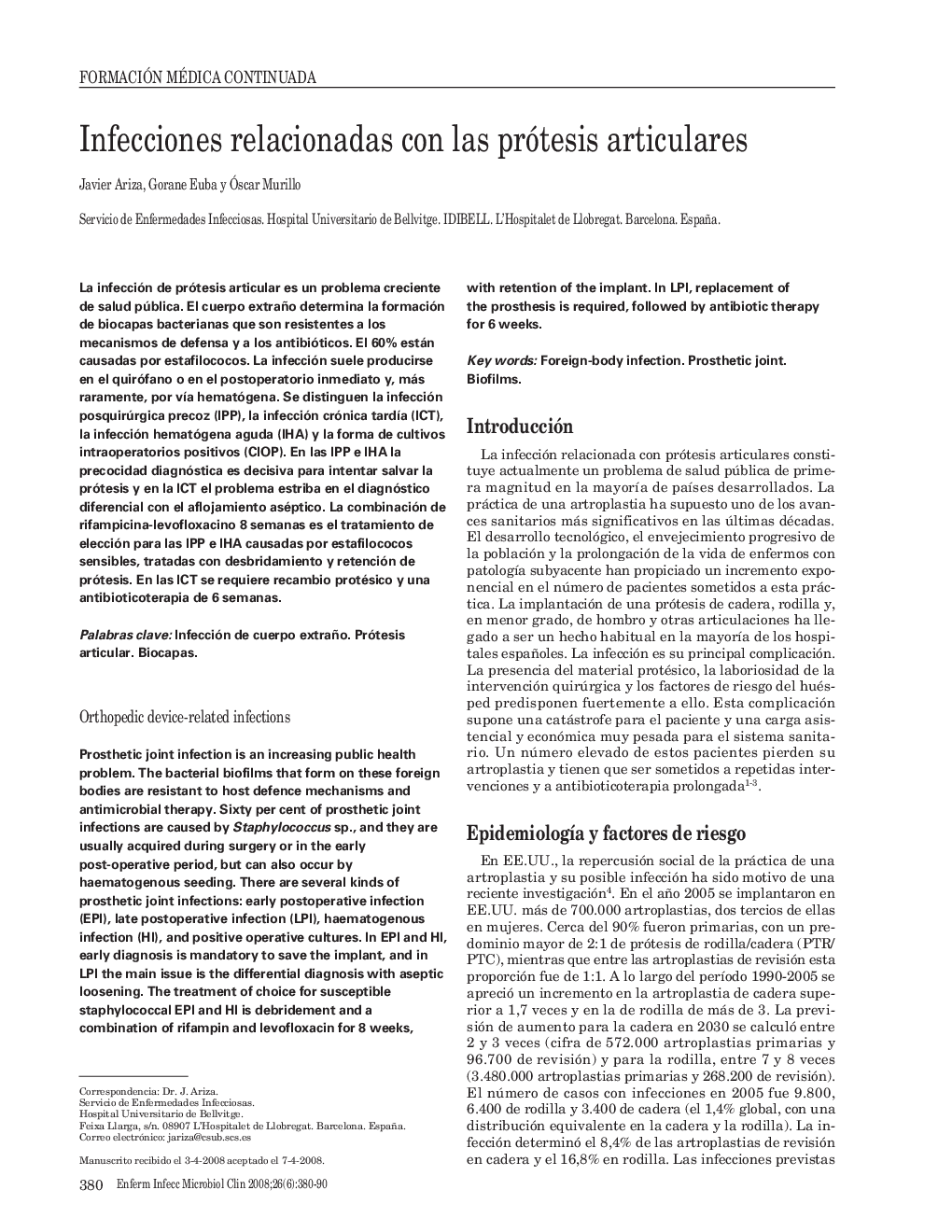| کد مقاله | کد نشریه | سال انتشار | مقاله انگلیسی | نسخه تمام متن |
|---|---|---|---|---|
| 3402543 | 1222724 | 2008 | 11 صفحه PDF | دانلود رایگان |

La infección de prótesis articular es un problema creciente de salud pública. El cuerpo extraño determina la formación de biocapas bacterianas que son resistentes a los mecanismos de defensa y a los antibióticos. El 60% están causadas por estafilococos. La infección suele producirse en el quirófano o en el postoperatorio inmediato y, más raramente, por vía hematógena. Se distinguen la infección posquirúrgica precoz (IPP), la infección crónica tardía (ICT), la infección hematógena aguda (IHA) y la forma de cultivos intraoperatorios positivos (CIOP). En las IPP e IHA la precocidad diagnóstica es decisiva para intentar salvar la prótesis y en la ICT el problema estriba en el diagnóstico diferencial con el aflojamiento aséptico. La combinación de rifampicina-levofloxacino 8 semanas es el tratamiento de elección para las IPP e IHA causadas por estafilococos sensibles, tratadas con desbridamiento y retención de prótesis. En las ICT se requiere recambio protésico y una antibioticoterapia de 6 semanas.
Prosthetic joint infection is an increasing public health problem. The bacterial biofilms that form on these foreign bodies are resistant to host defence mechanisms and antimicrobial therapy. Sixty per cent of prosthetic joint infections are caused by Staphylococcus sp., and they are usually acquired during surgery or in the early post-operative period, but can also occur by haematogenous seeding. There are several kinds of prosthetic joint infections: early postoperative infection (EPI), late postoperative infection (LPI), haematogenous infection (HI), and positive operative cultures. In EPI and HI, early diagnosis is mandatory to save the implant, and in LPI the main issue is the differential diagnosis with aseptic loosening. The treatment of choice for susceptible staphylococcal EPI and HI is debridement and a combination of rifampin and levofloxacin for 8 weeks, with retention of the implant. In LPI, replacement of the prosthesis is required, followed by antibiotic therapy for 6 weeks.
Journal: Enfermedades Infecciosas y Microbiología Clínica - Volume 26, Issue 6, July 2008, Pages 380–390